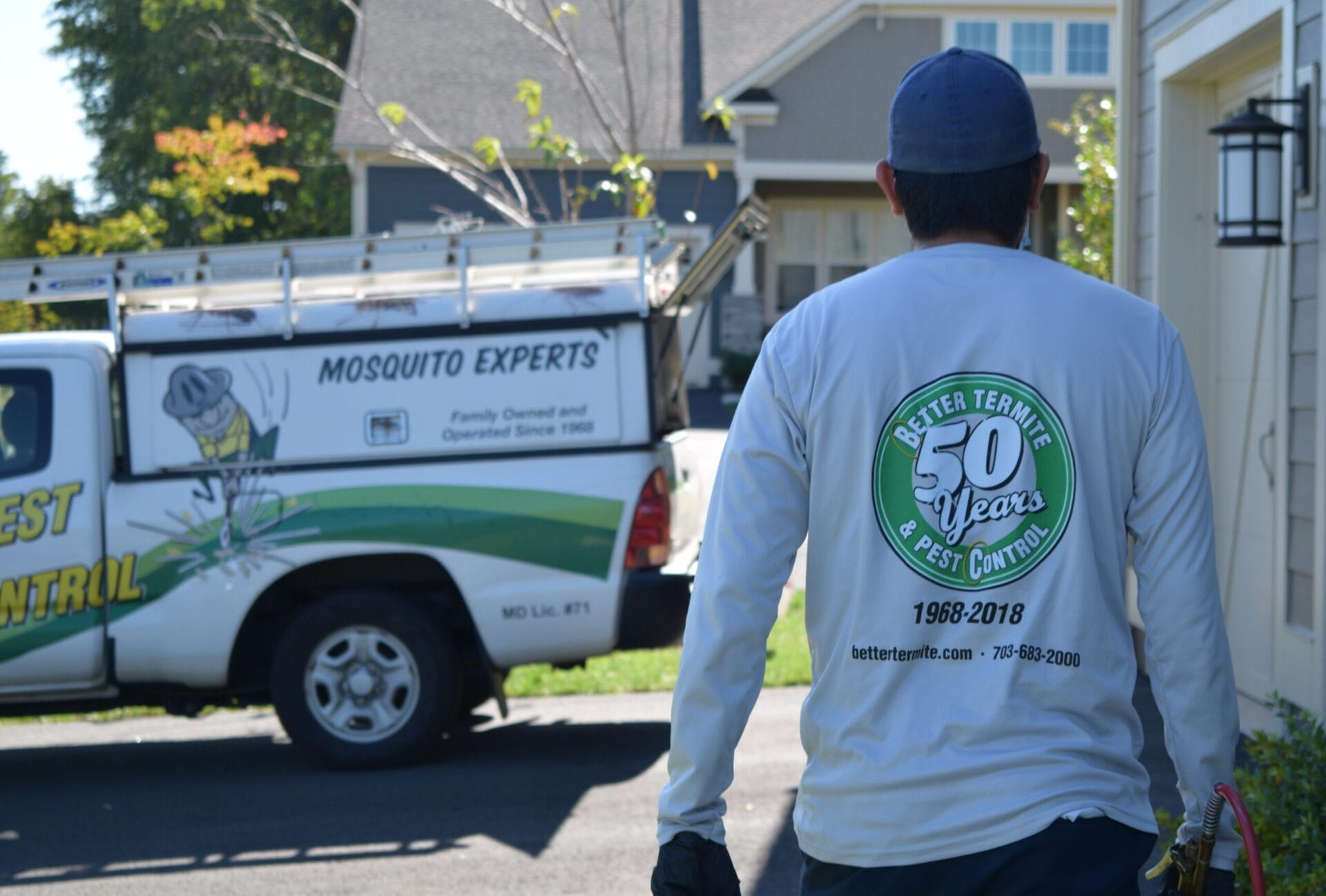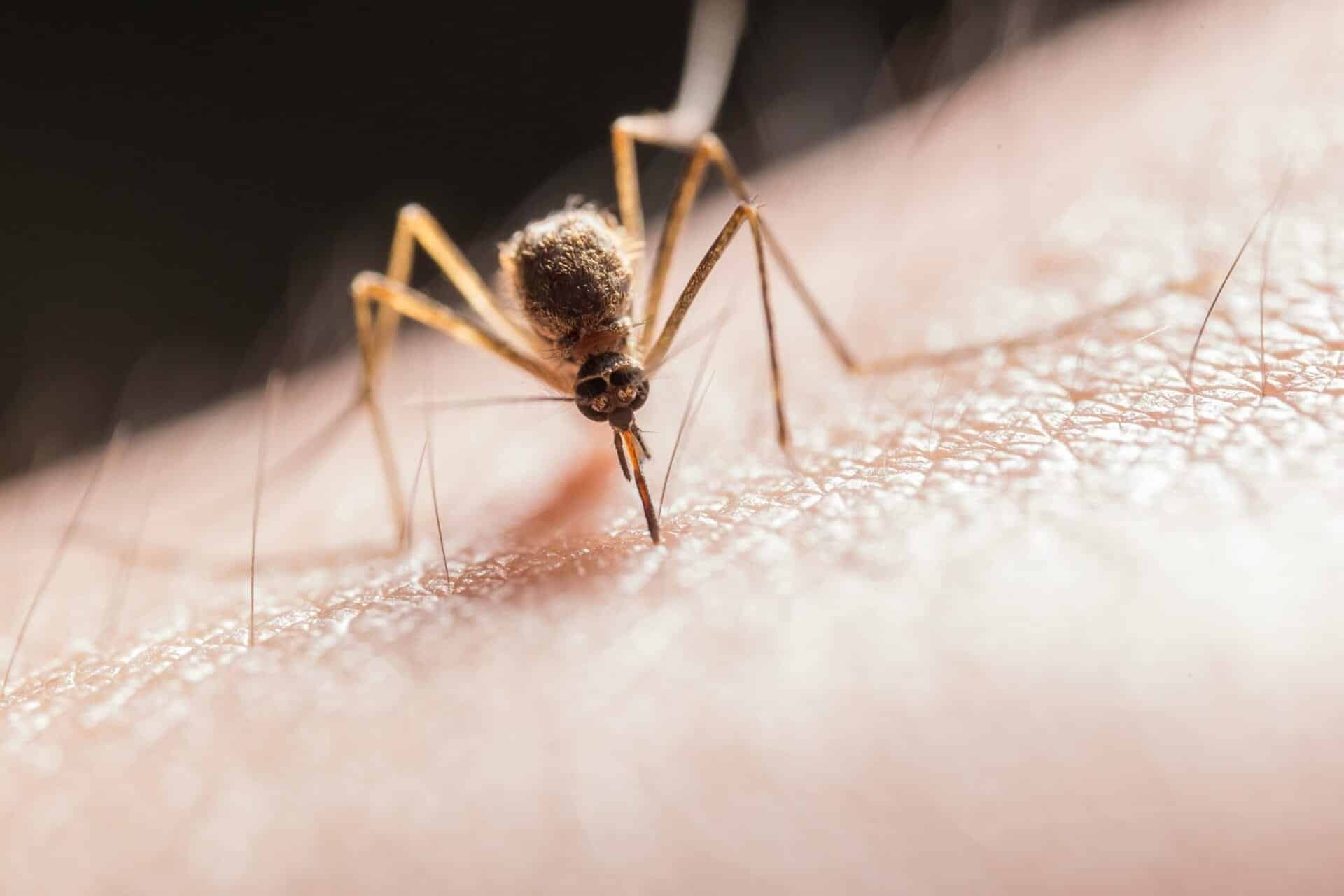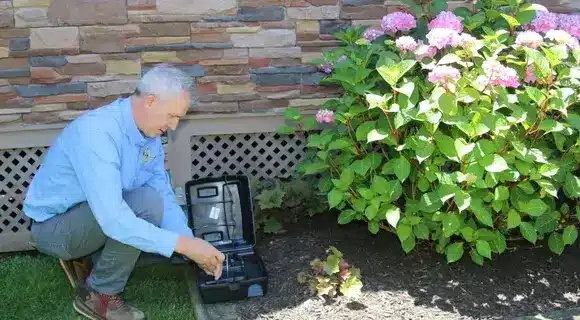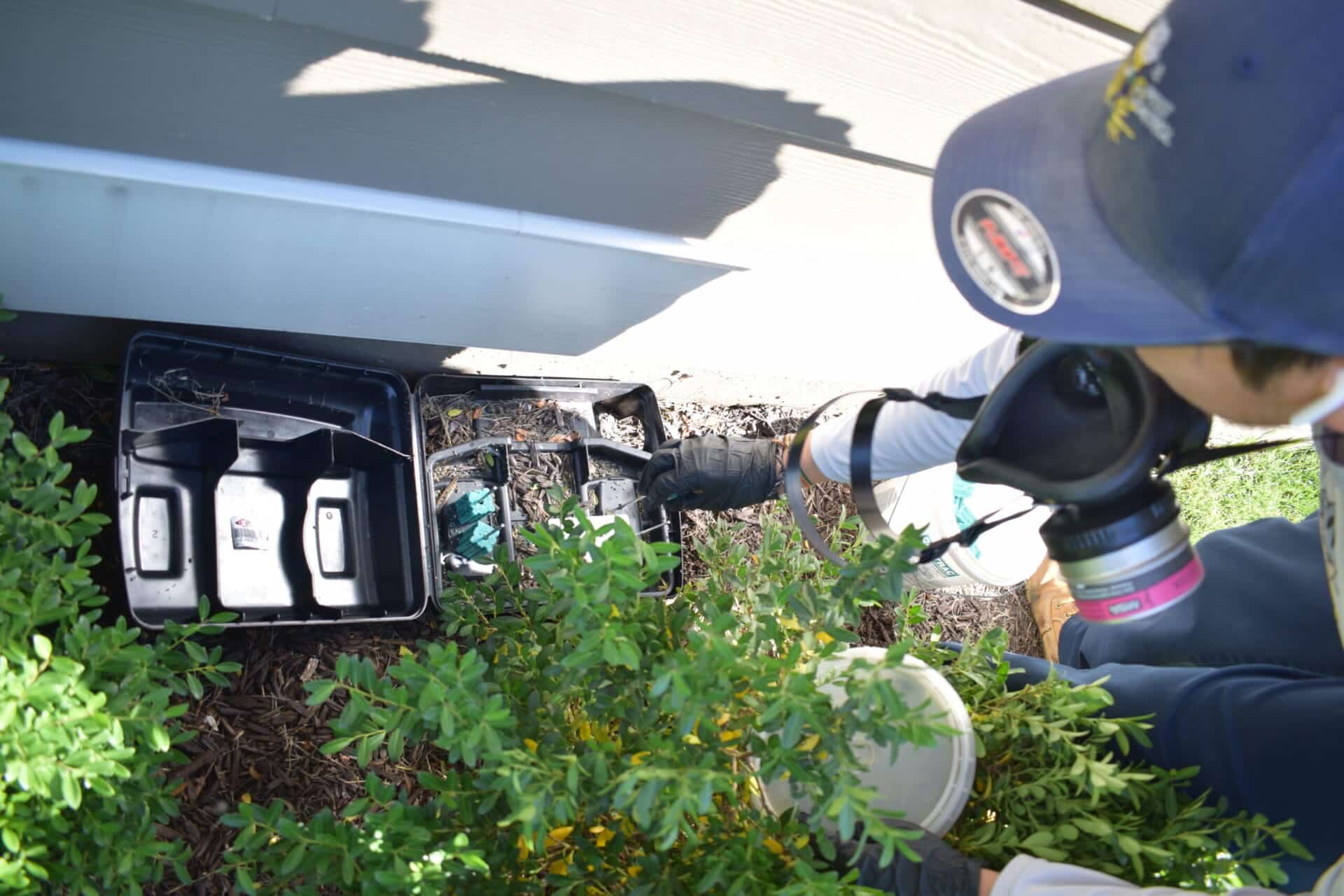


Finding tiny bugs or seeing weird damage on your favorite sweater can be worrying. Sometimes, the culprit might be carpet beetles. These little pests can sneak into homes and cause problems if you don’t catch them early. Spotting the common signs is the first step to dealing with them. As a licensed technician here in Virginia, I’ve learned a thing or two over the last 4 years in our family pest control business about how to find carpet beetles and handle an infestation. While carpet beetles in your home aren’t the most frequent call we get—maybe a dozen a year—knowing what to look for can save you trouble down the road.
Carpet beetles are small insects that belong to the Dermestidae family. They are quite common in homes.
Adult carpet beetles are small, usually only 1/16 to 1/8 inch long, kind of oval-shaped. Their color depends on the carpet beetle species. The black carpet beetle is, well, black or dark brown. Others, like the varied carpet beetle and furniture carpet beetle, have mottled patterns—like tiny speckles of white, yellow, brown, or orange.
Adult carpet beetles are actually attracted to light and often try to get outside. You might find them near windowsills, especially in the spring. Unlike their young, adult carpet beetles feed mostly on pollen and nectar from flowers outdoors. They can fly into your home through open windows or doors, or even hitch a ride on cut flowers.
Carpet beetles undergo a complete change: egg, larva, pupa, and adult. A female beetle will lay eggs, maybe around 40-100 tiny whitish ones, near a food source for the larvae. She’ll look for places like closets or areas with lint or pet hair.
After 1-3 weeks, the carpet beetle eggs hatch into larvae. This is the stage that actually causes damage to fibrous materials. Carpet beetle larvae look like tiny, fuzzy worms, maybe 1/8 to 1/4 inch long. They are often brownish or tan and covered in hairs or bristles. Some have a tuft of longer hairs at their tail end. These carpet beetle larvae prefer dark, hidden spots.
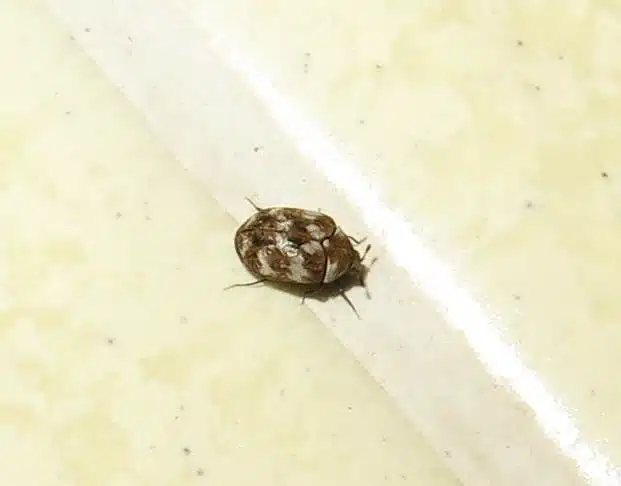
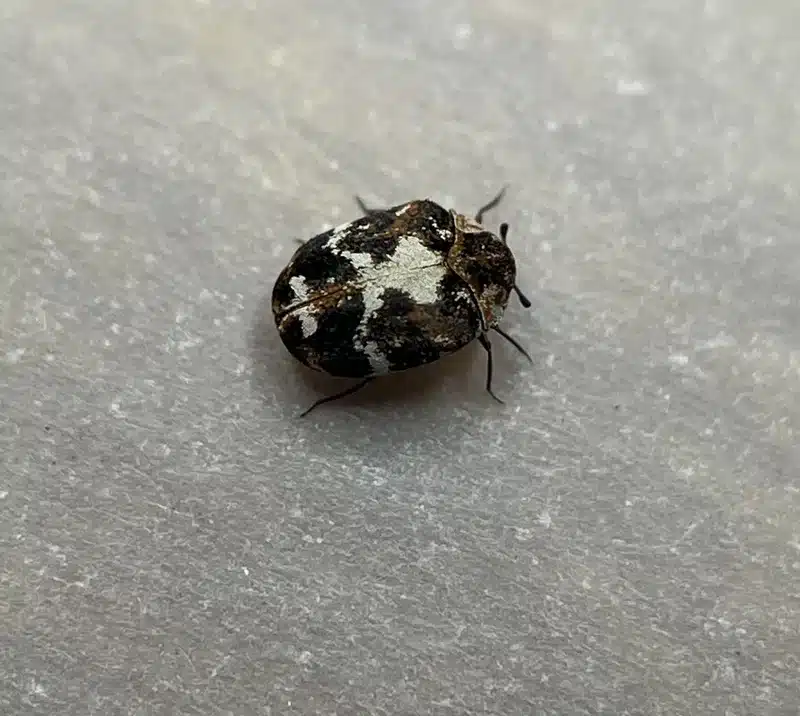
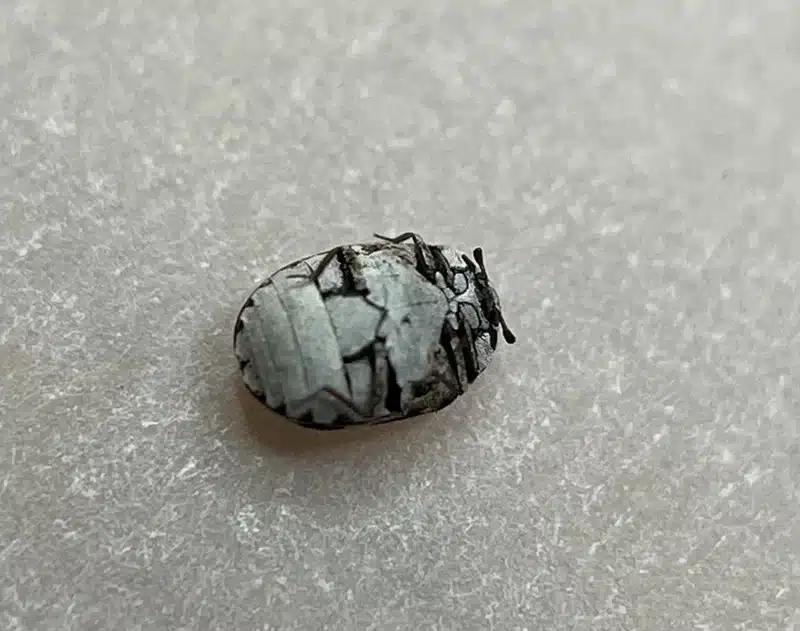
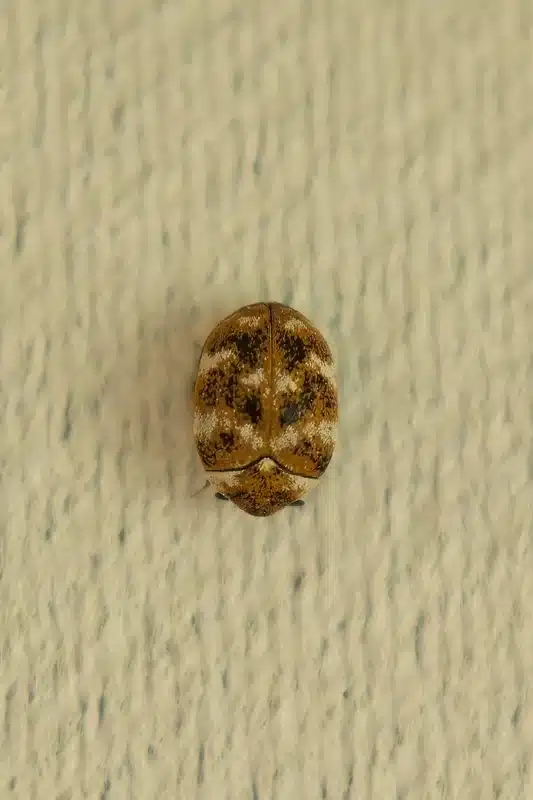
The larval stage can last a long time, sometimes close to a year, depending on food and temperature. As they grow, they shed their skin multiple times. Finally, they form a pupa, and after another 1-3 weeks, the adult beetle emerges, ready to start the cycle again.
Because the larvae hide so well, you often don’t know you have carpet beetles until you see the damage or other clues. Keeping an eye out for these common signs is key.
The most obvious sign of infestation is damage to items made from natural animal fibers. Carpet beetle larvae like to feed on keratin, a protein found in things like wool, fur, silk, feathers, and leather.
Look for:
They usually avoid synthetic fabric like polyester, but they might chew on blends if they are soiled with food or body oils.
As carpet beetle larvae grow, they molt, leaving behind their old skins. Finding these is a strong sign of a carpet beetle infestation.
Finding clusters of these cast skins or droppings means larvae have been active there.
Knowing what you’re looking for helps distinguish carpet beetles from other household pests.
Adult carpet beetles are:
They look different from clothes moths, which are small, tan moths that avoid light. If you see tiny round beetles near a window, it may be a carpet beetle.
Carpet beetle larvae are the real damage-doers. They are:
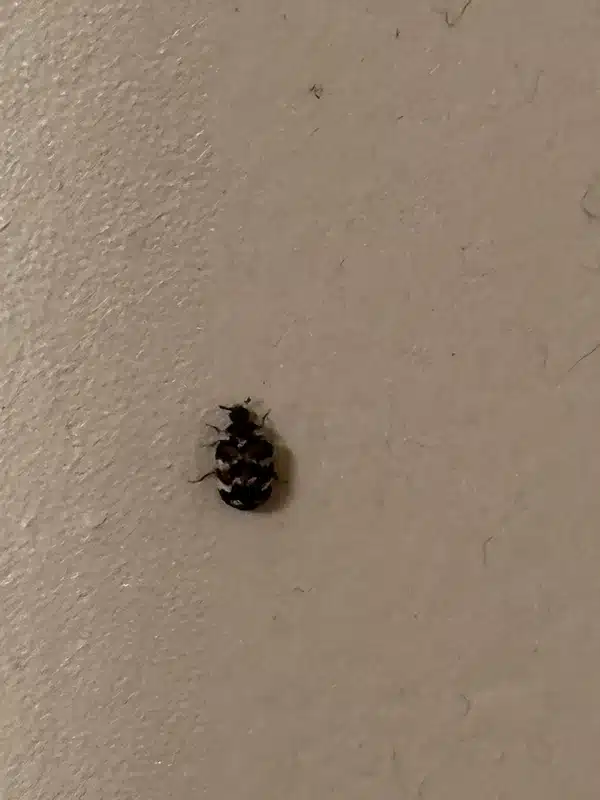
They don’t look like clothes moth larvae (which are pale, smooth worms often in silken cases) or bed bug nymphs (which are flat, reddish-brown, and bite). If you find fuzzy larvae or their shed skins but no webbing, you’re likely dealing with carpet beetles. It’s important to identify pests correctly, just like telling the difference between Termites and Flying Termites.
To find carpet beetles or larvae, you need to check their favorite hiding spots.
Carpet beetles thrive where food sources like lint, hair, and fabric collect undisturbed. Check:
Think dark and quiet. Lift rugs, move furniture you rarely move, and check the back corners of drawers and closets. Stored blankets, old clothes, felt hats, or even forgotten bags of pet food can become breeding grounds. Sometimes the source is unexpected, perhaps an old bird’s nest in an attic or chimney. Finding the main source is crucial for getting rid of the carpet beetle problem.
While small, carpet beetles can cause noticeable problems.
The main issue is the damage to fibrous materials. Carpet beetle larvae chew holes in valuable items:
This damage can cause significant loss if not addressed. Over time, small holes can become large patches, ruining the item.
Carpet beetles don’t bite people or pets. However, some people are sensitive to the tiny hairs (bristles) on the carpet beetle larvae and their shed skins. Contact with these can cause skin irritation, resulting in an itchy rash known as beetle dermatitis.
The skin reaction looks like small, red bumps or welts, sometimes mistaken for bed bug bites. If you have unexplained skin irritation and find signs of carpet beetles, the larval hairs could be the cause. Thorough cleaning usually resolves the skin issue once the infestation is gone. This type of reaction highlights why controlling household pests, whether they are carpet beetles or spiders, is important for comfort.
If you catch an infestation early, you might be able to handle it yourself. The key is thoroughness.
Sanitation is your best weapon.
For items you can’t wash:
Sometimes DIY isn’t enough, especially with a large or widespread infestation.
Consider calling for professional pest control if:
As a licensed technician myself, I know that sometimes finding all the hidden sources requires expertise. Our team collectively has decades of experience tackling pest problems across Northern Virginia, including areas like Alexandria.
A pest control professional can use targeted treatments:
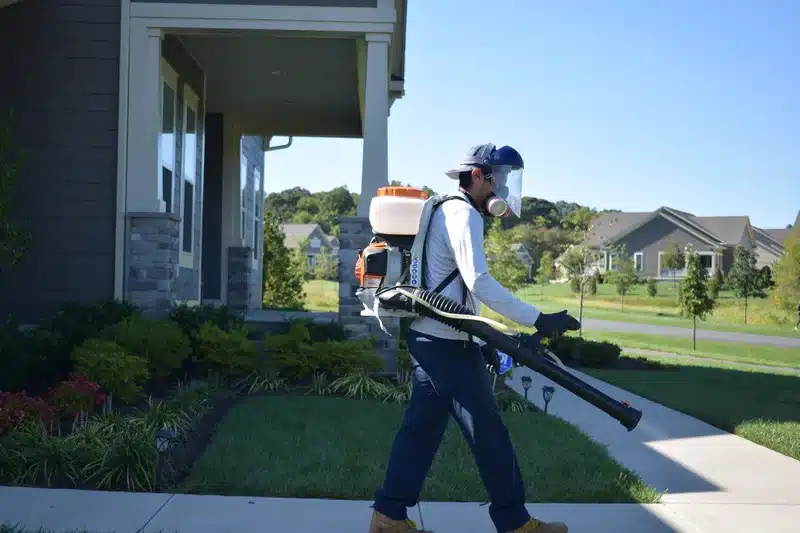
Always ensure any pest control services follow label directions carefully.
Once you get rid of carpet beetles, you’ll want to keep them out. Preventing a carpet beetle infestation relies on good habits.
Consistent pest control practices, similar to those used for termite prevention, can help maintain a beetle-free home.
Carpet beetles can be found indoors year-round, but their activity peaks seasonally.
Spring is often when people notice adult carpet beetles. They emerge from pupae and are often seen near windows trying to get outside. This is also when females lay their eggs. Larvae hatch and actively feed during the warmer months.
Larval development slows in cooler temperatures, but in heated homes, they can continue feeding through fall and winter. Many carpet beetle larvae overwinter and pupate the following spring. You might even see some larvae wandering in late winter as they search for food or pupation sites. Vigilance is needed year-round.
Dealing with carpet beetles starts with knowing the signs of carpet beetles. Look for damage on natural fabrics like wool carpet or clothing, find those tell-tale shed skins, and check dark, undisturbed areas like closets and under furniture. Thorough cleaning and vacuuming are your best first steps to get rid of carpet beetles. For stubborn infestations, professional pest control might be necessary. By staying vigilant and taking preventative steps, you can protect your home and belongings from these fabric-damaging pests. Remember, even a small sign warrants a closer look to prevent infestation.
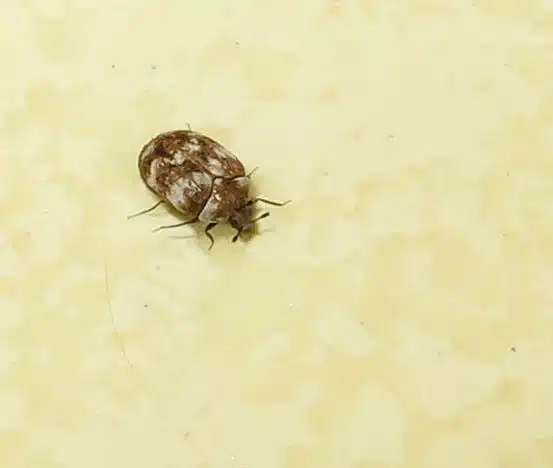
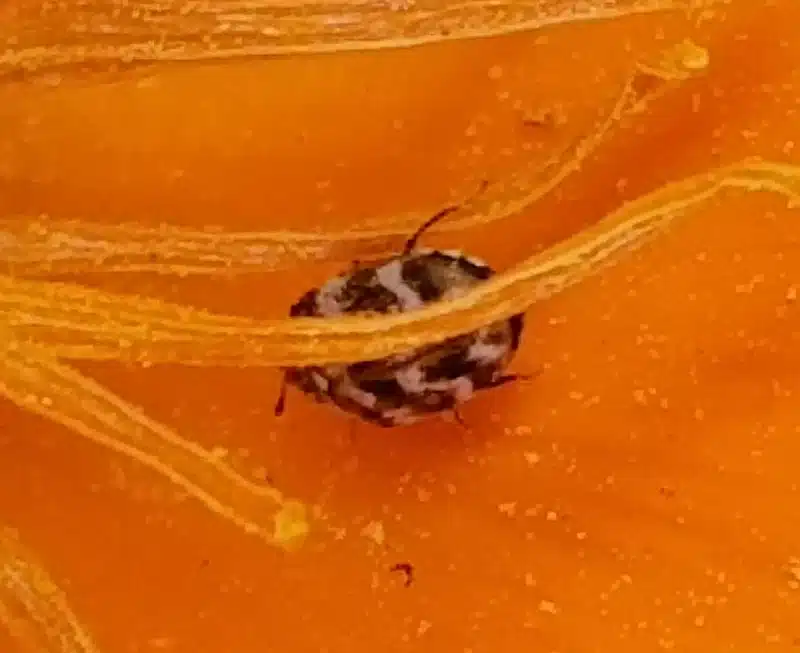
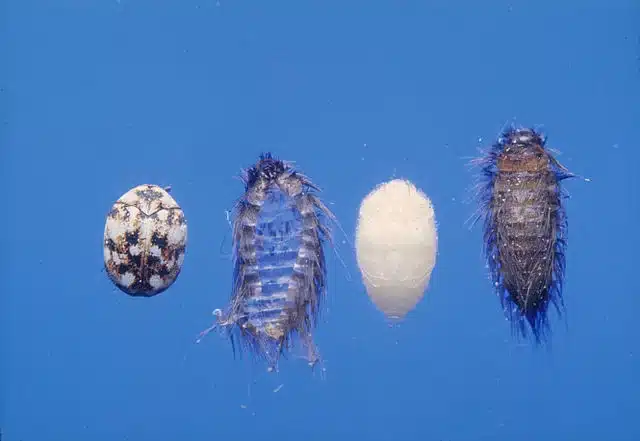
If you suspect you have carpet beetles or any other pest issue, don’t hesitate to reach out. Give us a call at 703-683-2000 or email us at [email protected] for expert advice or a free estimate from a licensed technician.
You might have carpet beetles if you see small, oval beetles (black or patterned) near windows, find fuzzy, brown larvae in dark places, notice irregular holes or thin patches on wool carpets, clothing, or other natural fabrics, or discover tiny, bristly shed skins in drawers or closet corners. These are the common signs of a carpet beetle infestation.
Carpet beetles can enter homes in several ways. Adult beetles might fly in through open windows or doors, especially in spring. They can also hitchhike on infested items like secondhand furniture, rugs, clothing, or even cut flowers brought indoors. Sometimes, an infestation starts from an old bird or rodent nest in an attic or wall void where carpet beetles feed on debris.
Not necessarily. While accumulations of lint, pet hair, and dust provide food for larvae, carpet beetles can infest even clean homes if they find a suitable food source like a wool rug, stored sweater, or even accumulated dead insects in a wall void. However, regular, thorough cleaning definitely helps prevent carpet beetles by removing potential food sources.
Adult carpet beetles might be mistaken for other small beetles like certain pantry pests (though pantry pests usually infest grains). Carpet beetle larvae are sometimes confused with clothes moth larvae, but moth larvae are smooth, pale worms often found in silken tubes or webbing, whereas carpet beetle larvae are hairy/bristly and don’t make webs. Also, the itchy rash caused by larval hairs (beetle dermatitis) can be mistaken for bed bug bites, although carpet beetles themselves do not bite. Consulting resources on identifying pests like ants or roaches can help sharpen your identification skills for various household invaders.
Carpet beetle larvae look like tiny (1/8 to 1/4 inch long) worms that are usually brownish or tan. They are distinctly covered in hairs or bristles, giving them a fuzzy appearance. Many species have noticeable tufts of longer hairs, especially at their rear end. They tend to curl up when disturbed and prefer dark locations.
Female carpet beetles lay their eggs near or on suitable food sources for their larvae. This often means eggs in fibrous materials like wool carpets (especially in hidden areas like under furniture or along edges), stored wool clothing, blankets, furs, silks, or even accumulations of lint, pet hair, or dead insects in dark, undisturbed places like closets, attics, or behind baseboards.
Yes, the larvae can cause skin irritation in sensitive individuals. The tiny hairs (bristles) on the carpet beetle larvae and their shed skins can cause an allergic reaction known as carpet beetle dermatitis. This results in itchy, red bumps on the skin, often resembling bites, but it’s an irritation, not a bite.
While not their primary target like bed bugs, carpet beetles could potentially be found around beds if there’s a food source nearby. This might include wool blankets, feather pillows, or accumulated dust and hair under the bed. However, they don’t feed on humans like bed bugs do. If you find bugs in your mattress seams, it’s more likely to be bed bugs.

With five years of hands-on experience in the pest control industry, George Schulz is a registered technician with the Virginia Pest Management Association and a proud third-generation professional in a family business that’s been protecting homes for over 57 years. He manages and trains a team of service pros while also leading internal research efforts—recently spearheading a deep-dive review of thousands of documents on pest control materials to hand-pick the most kid and pet friendly, most effective solutions tailored specifically for homes in the DC metro area. Read his bio.

